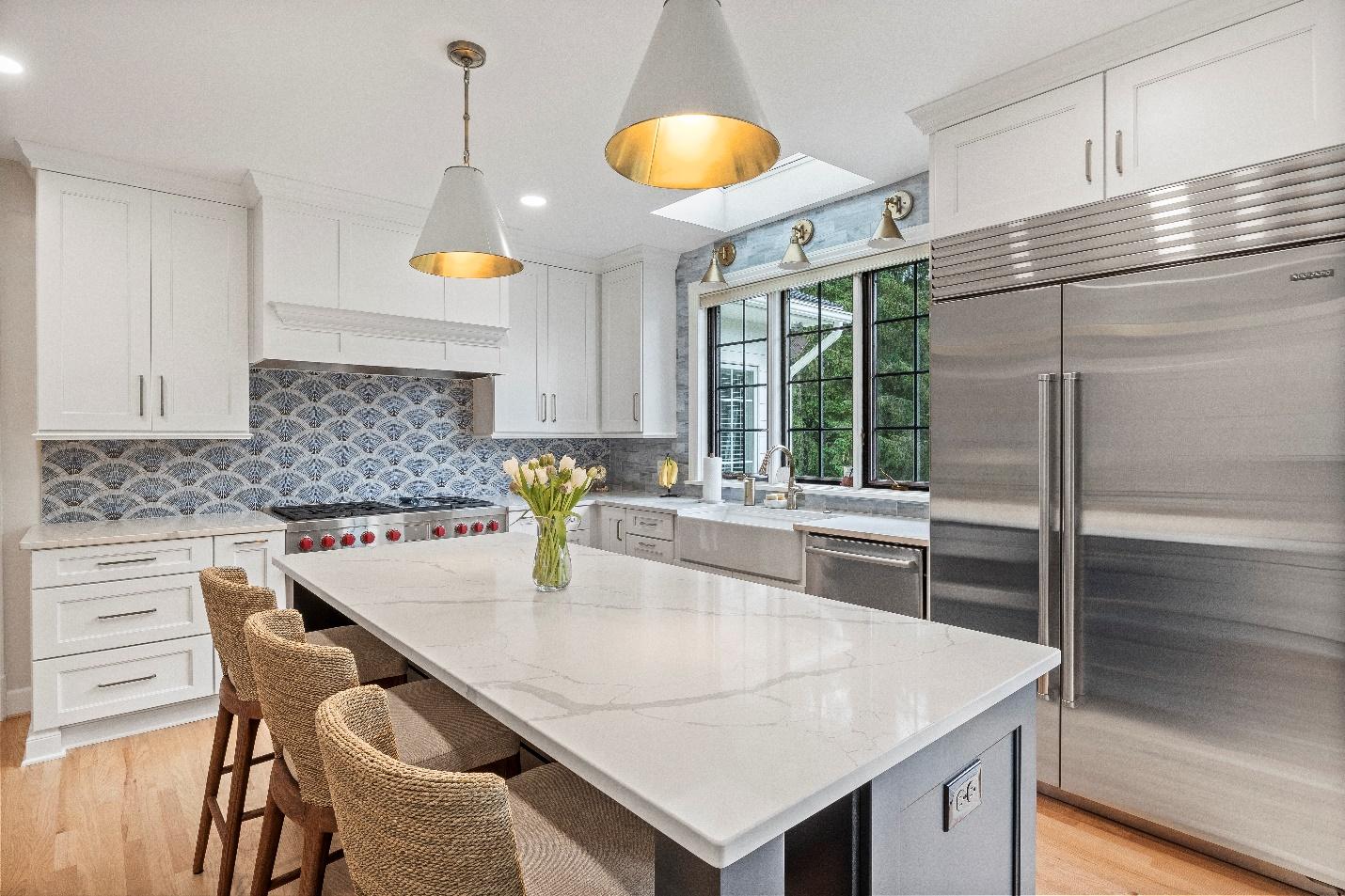At The Inde Design Studio in Victor, NY, we specialize in creating stunning kitchens and bathrooms, as well as guiding homeowners through the selection process for their custom new builds. Our mission is simple yet powerful: to turn dreams into reality by providing top-tier customer service, fostering lasting client relationships, and designing inspiring spaces that stand the test of time.
A Commitment to Excellence and Integrity
At the heart of The Inde Design Studio is a dedication to integrity. We believe that honesty and transparency build trust, forming the foundation of every successful project. From the initial consultation to the final reveal, our team prioritizes clear communication and ethical practices, ensuring that clients feel informed and confident throughout the design process.
Kitchen and Bath Remodeling: Elevating Everyday Living
The kitchen and bathroom are two of the most important spaces in any home, and we specialize in making them functional, stylish, and unique. Whether you’re looking to modernize your kitchen with custom cabinetry, high-end countertops, and state-of-the-art appliances, or transform your bathroom into a luxurious retreat with spa-like features, we bring expertise and creativity to every project. Our team works closely with clients to ensure every detail is tailored to their vision, from layout and material selection to the final finishing touches.
A One-Stop Shop: Our 5,000 Square Foot Showroom
Our expansive 5,000 square foot showroom is designed to be a one-stop shop for all your home design needs. Here, clients can explore a wide variety of finishes, materials, and design inspirations, making it easier than ever to visualize their dream space. Whether you’re selecting kitchen cabinets, bathroom vanities, flooring, countertops, or lighting, our showroom offers a comprehensive experience to streamline the decision-making process.

Custom Home Selections: Crafting a Cohesive Design
Building a custom home is an exciting journey, and The Inde Design Studio is here to make the process seamless and enjoyable. We guide homeowners through every design decision, helping them choose finishes, flooring, cabinetry, lighting, and more to create a cohesive and personalized space. With our expertise, clients can confidently navigate the overwhelming number of options, ensuring that their new home reflects their style while maintaining practicality and elegance.
More Than Kitchens and Baths: Designing Every Space in Your Home
Beyond kitchens and bathrooms, we design and transform a variety of spaces to enhance everyday living. Our expertise extends to pantries, basements, laundry rooms, closets, and even fireplaces. Whether you need a functional and stylish pantry, a cozy and inviting basement retreat, a well-organized laundry room, or a beautifully designed custom fireplace, we tailor every detail to fit your needs and preferences.

Communication: The Key to Success
A seamless design process begins with clear and open communication. Our team works closely with clients to understand their vision, ensuring that every project reflects their unique style and functional needs. By fostering collaboration and mutual understanding, we create spaces that truly resonate with those who inhabit them.
Continuous Improvement and Industry Leadership
The world of design is ever-evolving, and we are committed to continuous improvement. Our team actively engages in ongoing learning, adapting to industry advancements, and refining our processes to maintain the highest standards of excellence. This dedication to growth ensures that our clients receive the most innovative and well-executed designs available.
Customer Satisfaction: Our Top Priority
At The Inde Design Studio, our clients are at the center of everything we do. We take the time to listen, understand, and bring their visions to life with unparalleled attention to detail. Our personalized approach ensures that every kitchen, bath, or custom home project is a reflection of our clients’ aspirations, resulting in spaces that are not only beautiful but also functional and meaningful.
Customization: A Tailored Experience
We recognize that no two projects are alike, which is why we offer customized solutions that cater to each client’s unique needs. Whether it’s designing a dream kitchen, creating a spa-like bathroom, or curating the perfect selections for a custom new build, we provide a comprehensive, one-stop-shop experience. Our team takes pride in delivering tailored services that align perfectly with our clients’ lifestyles and preferences.
Work-Life Balance: A Healthy and Supportive Environment
A thriving team creates the best designs. That’s why we cultivate a supportive work environment that values well-being and work-life balance. By prioritizing our team members’ personal and professional fulfillment, we ensure that their creativity and passion translate into outstanding results for our clients.

Bringing Your Vision to Life
At The Inde Design Studio, we don’t just design spaces—we create environments that inspire, uplift, and transform everyday living. With an unwavering commitment to integrity, innovation, communication, and customer satisfaction, we turn design dreams into reality. Whether you’re envisioning a modern kitchen, a spa-like bathroom, making selections for your custom-built home, or designing a functional and stylish pantry, basement, or fireplace, our team is ready to bring your vision to life with excellence and dedication.
Experience the difference of working with The Inde Design Studio—where dreams meet design excellence!

